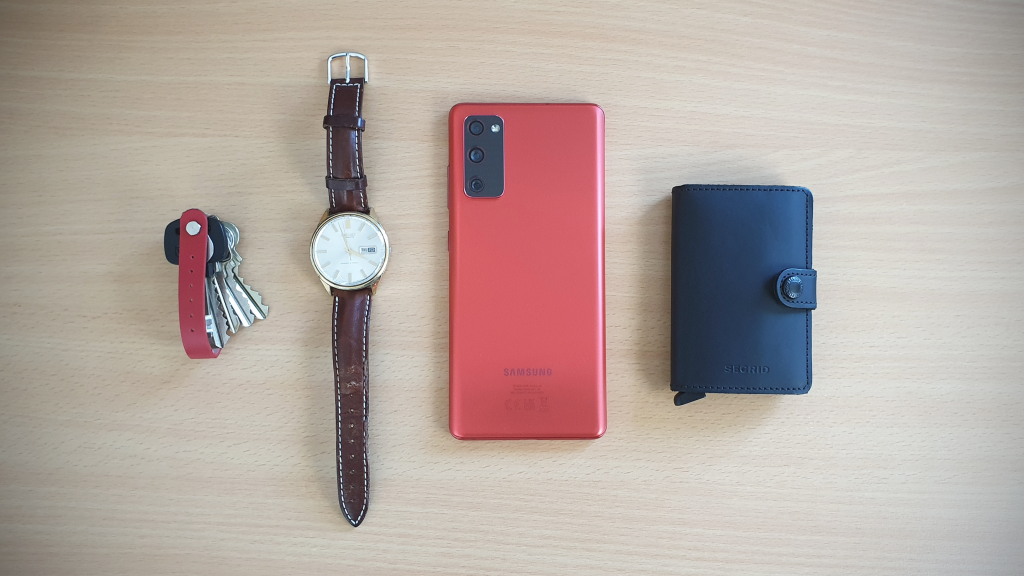As I’ve previously stated; the mindset and lifestyle of minimalism are not about buying items to fit the “minimalist aesthetic”, whatever that is. Minimalism is about being intentional with materialistic matters and therefore making sure that purchases add value to one’s life. However, this can be difficult, in a materialistic environment. To sort out my thoughts on this topic, I wrote this text on my tips and tricks for thinking in a minimalistic manner about purchases in general, and tech products in particular. I hope that you’ll find the text useful as well!

Perspective and gratitude
Generally speaking, the materialistic needs of an individual with access to this very text, should be largely met. Just having a tool as unbelievably powerful as the internet available, should speak about how fortunately positioned we are in the history of the world. What we have is always sufficient to get from point A to point B. If it isn’t we should redefine these points. We must remind ourselves that external solutions won’t solve internal questions. Would we really be more fulfilled with more stuff, such as a new phone? The happiness may spike during the unboxing experience, but that enthusiasm will slowly fade away, and that precious product will become the new normal. Seeing the meaning behind the material can give the items a purpose: A book isn’t just a collection of printed papers from dead trees, but a portal into someone else’s experiences. My workspace isn’t just a setup of material objects, but a toolbox for creating.
Creativity and resources
What’s our purpose on Earth? I think that creating is a fundamental answer to this question. Creating art to make life more divine. Creating innovations to advance civilization. Creating a new generation, a new world, before we return to the cosmos – or whatever happens when life as we know it ends. Whatever our purpose is, materialistic things are tools to achieve it. Everything from a home to keep you sheltered, to technology for complementing where we are limited. I like the mindset of using tools to create and live life, instead of letting materialism consume you.
Equipment is never the heart of a craft. Most mainstream million-dollar movies can’t compete with their old iconic predecessors. When I’m making YouTube videos or engaging in any form of creative endeavor, I try to be efficient with the resources at hand, often resulting in a fun and creative process. I also create as many items as I can myself, ranging from decorative to practical. Ask yourself if you can create the materialistic objects that you want, through woodworking, 3D printing, or in my case; LEGO building. As this question relates to electronics, it might be reasonable to hand the bleeding-edge technology to experts.

Need vs. want
How would you answer the classical question of what you would bring if you were stranded on an island? Perhaps the items that didn’t make it to this list can’t fully be regarded as necessities, but rather things you want. Sometimes what you need and want – what is required and what is desired – conjoint. If your smartphone is severely impaired, perhaps you want and need an upgrade. What we identify as necessities depends on which level of analysis we’re using. No one really needs a smartphone for survival, but having a device for communicating in a connected world, can be crucial for what you want to do. When the “need” isn’t even in the equation, it might be a good thing to think twice before bringing an item into your life. If you only want a faster computer to decrease the lag latency in order to insignificantly improve your aim in Fortnite, it may be a bit excessive (and cringe). But if a faster computer will smoothen the experience of creative endeavors, and therefore save you a lot of time and sanity, it can be a worthwhile investment.
A concrete tip for knowing what you need, respectively what you want, is to write down the product(s) on a piece of paper, and stop thinking about it. If you’re reminded about this product’s potential convenience when you go about your day, it may be a good investment. However, what I’ve noticed mostly happens is that you forget about it, and later review the note with a lot less craving for the product. It was just a matter of impulsivity, which this method aims to counter.
Mindless vs. mindful
It seems to me that the shopping for a lot of things that one doesn’t really need takes place because of a low, or just discounted, price tag. It can be difficult to let a 40% offer slip by. There is this biblical message that one should be fleeing temptations when they arise – a message I’ll probably examine in a future post on this website. If the latest “super-deal” (usually expressed in a red capital font, followed by at least one exclamation point) is a temptation; try to avoid it. Flee from it. Unsubscribe to newsletters with promotional offers, and don’t walk into a store with no goal in mind. If you’re shopping intentionally, you approximately know what you’re looking for, and can more easily filter out unnecessary convenience goods. I believe that the fear of missing out (FOMO) can be applied to a lot of addictions, including compulsive shopping: You don’t know what offers you’re missing out on if you disconnect to updates about the latest offers. The right response to FOMO is: “Yes, I will miss out. Obviously. But that’s the price to pay for not missing out on an intentional lifestyle”.
In summary: Use what you have, and get what you need, to create what you can.
BONUS: Concrete tips for purchasing tech
- Don’t default to new and expensive products: In the world of smartphones, the flagship lineup is a demonstration of the very best that a company has to offer. However, that’s not where the most value is to be found, for the vast majority of consumers. You can think about any phone that’s not a flagship as a compromised flagship: In order to get the price tag down, companies have to cut corners in the places that will satisfy the largest amount of potential consumers. New, niched, and expensive features on flagship devices, such as ultrasonic fingerprint scanners, ridiculous zoom capabilities, and world-class displays, are features you won’t find very frequently on budget options because they are features that people generally don’t care about, and would trade for a lower price tag. Therefore I’ve strongly suggested that people shouldn’t default to the newest high-end products that a company sells – leave that to the tech-enthusiasts.
- Consider tools to find a good price: There are services that analyze the market to provide you with the best price for the products you’re looking for. When I identified that I should eventually upgrade my phone, all I needed to do was to type in a bunch of options for phones I would consider, and let the service do the job for me. I would get notified if the price dropped below a certain threshold I had decided. Very much like the tip of writing down products you want to get, you can stop thinking about the purchase once this is done. Congratulations; now you don’t need to refresh the market 20 times a day. Alternatively, you could talk to that one person you know, who is knowledgeable about tech.
- Recycle your products: I’m mostly referring to recycling in the sense of exchanging tech with relatives. I got my first phone on my 10th birthday, and since then I’ve changed phones 7 times. This may sound like much for 9.5 years, but we recycle phones in our family and extended family. Instead of selling my phone (I would get 150 dollars max), it will be a good upgrade for my oldest younger brother. Another alternative is to check if your phone manufacturers or carriers offer something for recycling your old phone.



